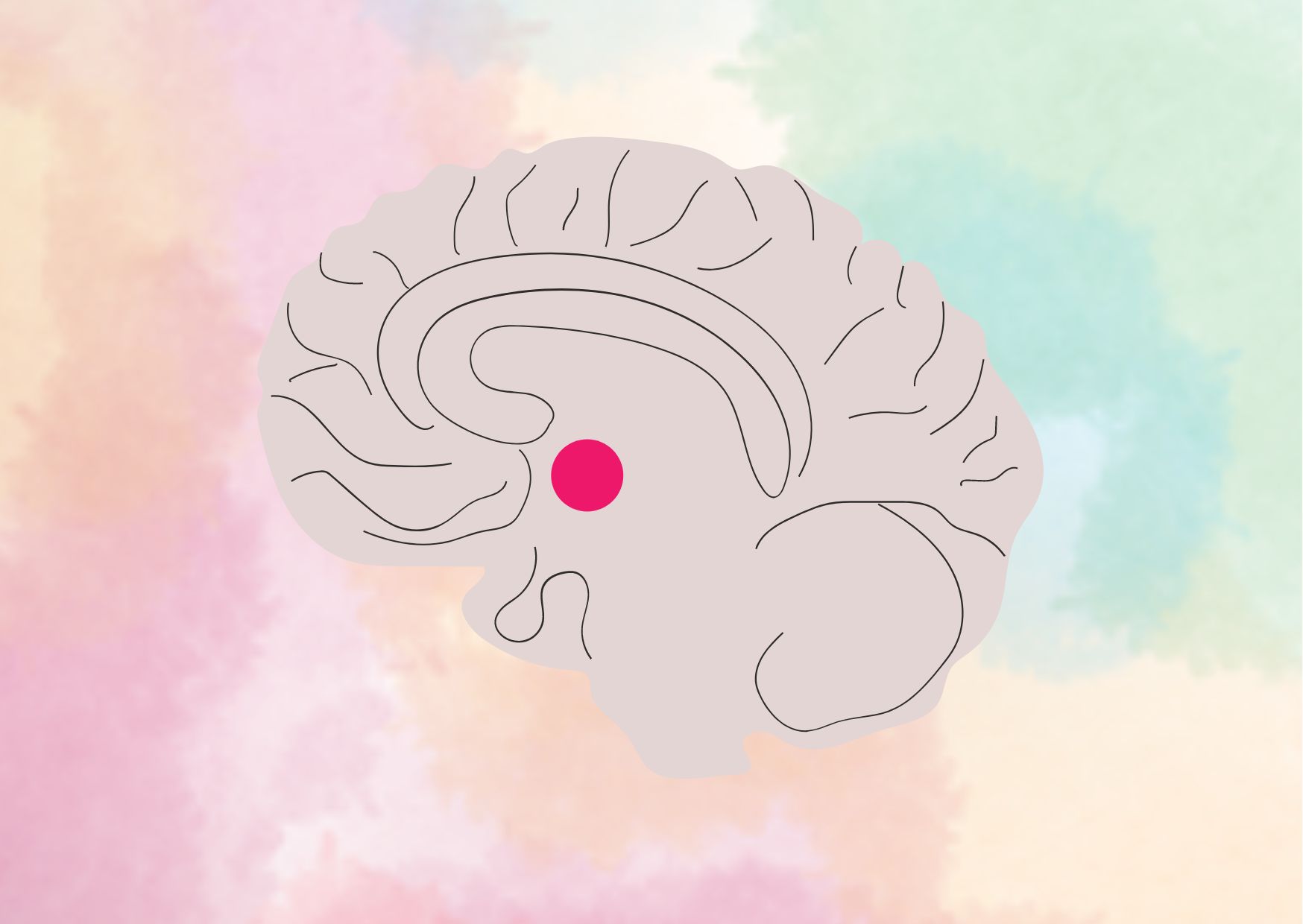Exploring the Amygdala: Your Brain’s Emotion Center
The amygdala, an almond-shaped structure located deep within the temporal lobe of the brain, is a crucial component of the limbic system responsible for emotional processing. This tiny cluster of nuclei acts as the brain’s emotional center, playing a pivotal role in the regulation of emotional intelligence, fear responses, and emotional learning.
The amygdala’s intricate network of connections allows it to receive and integrate sensory information from various brain regions, assigning emotional value to stimuli and triggering appropriate physiological and behavioral responses. Whether it’s the rush of fear during a perceived threat or the sense of reward and motivation triggered by positive experiences, the amygdala orchestrates a symphony of emotional reactions that shape our thoughts, actions, and social interactions.
Anatomy of the Amygdala
Structural Overview
The amygdaloid nucleus is an almond-shaped structure located deep within the temporal lobe, forming an integral part of the limbic system responsible for emotions, behavior, and memory. This intricate cluster comprises approximately 13 nuclei, further divided into five major groups:
- Basolateral nuclei
- Cortical-like nuclei
- Central nuclei
- Other amygdaloid nuclei
- Extended amygdala
Neural Connections
The amygdala’s extensive neural circuitry allows it to process information between the prefrontal-temporal association cortices and the hypothalamus, as well as establish connections with the basal ganglia circuit. This intricate network facilitates the amygdala’s role in regulating anxiety, aggression, fear conditioning, emotional memory, and social cognition.
Subregional Specialization
While the amygdaloid nucleus functions as a cohesive unit, specific subregions exhibit specialized roles. For instance, the basolateral nucleus and central amygdaloid nucleus play more distinct parts in emotional processing and fear responses.
Development and Vascularization
The amygdaloid nucleus develops from populations of diencephalic and telencephalic cells that form the floor of the lateral ventricle around three weeks after conception. Its blood supply is provided by the anterior choroidal artery, while the posterior choroidal vein drains the structure.
Anatomical Location
Situated within the temporal lobes, the amygdaloid nucleus resides medial to the hypothalamus and adjacent to the hippocampus and inferior (temporal) horn of the lateral ventricle. This strategic positioning allows the amygdaloid nucleus to integrate and process various sensory inputs, contributing to its pivotal role in emotional processing.
Nuclei and Functions
The amygdala’s nuclei can be further categorized based on their specific functions:
| Nucleus Group | Primary Functions |
| Basolateral (ventrolateral) | Responses to stress, feeding, and drinking behaviour |
| Corticomedial (dorsomedial) | Hunger and eating behaviors |
| Centromedial | Respiratory and cardiovascular functions |
Input and Output Pathways
The basolateral group receives inputs from various brain regions, including the olfactory bulb, orbitofrontal cortex, cingulate gyrus, brainstem, basal forebrain, medial thalamus, and hypothalamus. The stria terminalis pathway connects the centromedial nucleus to the ventromedial nucleus of the hypothalamus and also projects to the septal nuclei and thalamic regions.
By leveraging its intricate anatomy and neural connections, the amygdala orchestrates a symphony of emotional responses, shaping our thoughts, actions, and social interactions.
Role in Emotional Processing
Emotional Evaluation and Integration
The amygdaloid nucleus serves as the central subcortical emotional brain structure, constantly evaluating and integrating a variety of sensory information from the surroundings. It assigns appropriate values to emotional dimensions such as valence (positive or negative), intensity, and approachability. This process allows the amygdaloid nucleus to interpret external stimuli as potentially dangerous or rewarding, and subsequently relay this information to other brain regions like the hippocampus.
Regulating Autonomic and Endocrine Functions
The amygdala plays a crucial role in regulating autonomic and endocrine functions, decision-making, and adaptations of instinctive and motivational behaviors in response to environmental changes. It achieves this through:
- Implicit associative learning
- Changes in synaptic plasticity (short and long-term)
- Activation of the fight-or-flight response via efferent projections from its central nucleus to cortical and subcortical structures
Emotional Processing and Fear Response
The amygdala is instrumental in processing fear and emotional learning. Specific nuclei within the amygdaloid nucleus regulate various aspects of the fear response:
- The central nucleus (CeA) modulates the release of cortisol, startle response, and autonomic nervous system activity.
- The lateral (LA) and basolateral (BA) nuclei are involved in the learning and associative processing of fear conditioning.
Different amygdalar regions may differentially mediate various fear-related behavioral outputs, highlighting the structure’s complex role in emotional processing.
Emotional Perception and Attention
The amygdaloid nucleus contributes to emotional experience by enhancing attention and perceptual encoding of emotional events, thereby increasing their subjective salience. It plays a key role in processing information from faces, particularly directing attention to the eye region, which is crucial for recognizing emotions like fear. Individuals with amygdaloid nucleus damage often exhibit impairments in recognizing fear from facial expressions.
Salience and Relevance Coding
Rather than solely coding for emotional valence or arousal, the amygdala appears to code for the salience or relevance of stimuli. It modulates attention and processing resources towards stimuli that are unpredictable, ambiguous, or socially significant. This function may be tied to individual differences in propensity for negative affect, as greater negative affect correlates with heightened amygdala response to fearful facial expressions.
Embodied Attention and Resource Redirection
The amygdaloid nucleus may represent “embodied attention” – the link between central (mental) and peripheral (bodily) resources. It redirects physiological resources to attend to and encode events of emotional significance. amygdaloid nucleus lesions can eliminate the subjective biasing of perception toward emotionally significant events, rendering the attentional landscape “flat.”
Through its intricate network of connections and specialized nuclei, the amygdaloid nucleus orchestrates a symphony of emotional responses, shaping our thoughts, actions, and social interactions. Its dysfunction has been implicated in stress-related psychopathologies like post-traumatic stress disorder (PTSD), underscoring its pivotal role in emotional processing.
Fear and Emotional Learning
The amygdaloid nucleus plays a pivotal role in modulating the fear response and facilitating emotional learning, both in animals and humans. Extensive research has shed light on the intricate mechanisms underlying this process.
Fear Response Modulation
- The amygdala, particularly the lateral (LA) and basolateral (BA) nuclei, is critical for the acquisition and expression of conditioned fear responses.
- Chronic stress has been found to increase fear-related behaviors and enhance neural excitability within the LA circuits of the amygdaloid nucleus. This heightened excitability is mediated by a reduction in potassium channel-dependent regulation of action potential firing, amplifying the amygdalar response to chronic stress.
- The central nucleus (CeA) of the amygdala is involved in the expression of conditioned fear responses, such as freezing behavior, autonomic arousal, and neuroendocrine responses.

